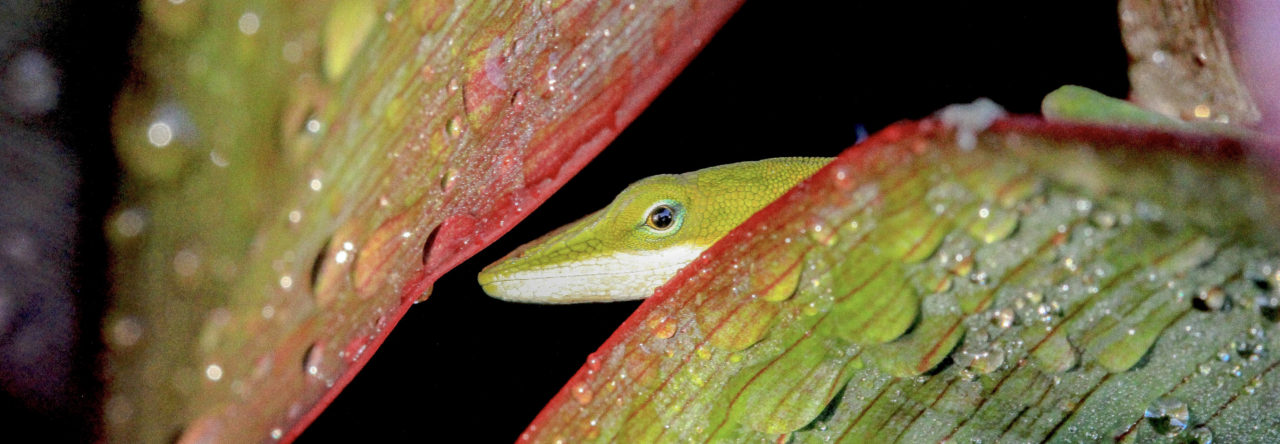
Found this nice explanation of anole color change on twitter. It’s from the website of Elizabeth Nixon, a professional artist, who says that it was made in Photoshop in 40 hours. Very nicely done!
Latest posts by Jonathan Losos (see all)
- Evolution in Real Time on Lizard Island - March 23, 2025
- Spider Snags Adult Anolis osa - March 22, 2025
- An Homage to the Green Anoles of New Orleans - March 21, 2025


Pat Shipman
Beautiful! I wonder if I could get permission to print this out & put it up in the National Trust House on Little Cayman?
Katie Boronow
On a technical note, iridophores do not actually contain “blue-green pigment.” Iridophores contain stacks of platelets that selectively reflect blue-green wavelengths of light. For this reason, blues and greens are usually termed structural colors.
Kevin de Queiroz
I agree that the presentation is nicely done, but I think there are a couple of inaccuracies. I’m not an expert on coloration, but I believe that the blue color of the iridophores is structural–based on rows of reflecting platelets rather than pigments. Second, the epidermis is illustrated as green or brown, but I believe that it is more or less colorless (as seen in a shed skin). The color results from the light reflected (through the epidermis) by the deeper lying xanthophores and iridophores (yellow plus blue yielding green) or the melanophores (brown), all of which are located in the dermis.